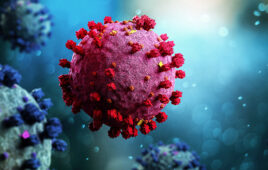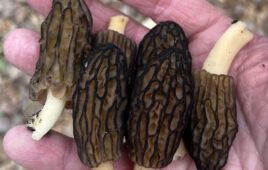 Reoviruses are benign viruses with an important property: they are oncolytic, meaning they are capable of infecting and destroying many kinds of cancer cells. The story of how this discovery was made is an exciting one.
Reoviruses are benign viruses with an important property: they are oncolytic, meaning they are capable of infecting and destroying many kinds of cancer cells. The story of how this discovery was made is an exciting one. The first reovirus was isolated in 1951 and became a popular research topic for leading virologists. Reoviruses were a major focus of investigation in the Duke University laboratory of Wolfgang Joklik, where Patrick Lee arrived as a postdoctoral fellow in 1978. In an early experiment, Lee found the reovirus cell attachment protein, a result that he and Joklik published in the journal Virology in 1981.1
Subsequent research showed two mouse cell lines previously known to express no epidermal growth factor receptor (EGFR) were relatively resistant to reovirus infection, whereas the same cell lines became susceptible to infection with the insertion of the gene encoding EGFR. In papers published in 1993,2,3 researchers concluded that the process of reovirus infection is closely coupled to the cell signal pathway mediated by the EGFR.
In 1996, two possible explanations for the augmentation of reovirus infection by functional EGFR were put forward.4 The first is that reovirus plays an active role by first binding to EGFR. The second is that reovirus takes advantage of an already activated signal transduction pathway conferred by the presence of functional EGFR on the host cell. To decide, an experiment was designed using an oncogene related to a growth factor receptor similar to EGFR. Addition of this oncogene made cells that are normally resistant to reovirus infection become susceptible to infection. This showed that what mattered was not the attachment process of reoviruses, but the internal modification of cells allowing the reovirus to reproduce rapidly.
What was it about the activated signal transduction pathway within the cells that made them susceptible to infection by reovirus? Answering this question was made easier by the availability of cell lines transformed with active oncogenes. Preliminary data suggested that activated Ras alone also confers enhanced reovirus infectibility. Ras was investigated because it was widely known to be downstream from EGFR.
The discovery that the reovirus often infects cells that have an activated Ras pathway suggested immediately that the virus might be oncolytic, i.e., capable of killing cancer cells by infecting and bursting them.
Studies showed that reoviruses could kill many different kinds of cancer cells in test tubes; but could they be effective in animals? A new line of research was launched to determine whether injecting cancerous mice with cells infected by reovirus would have any effect on their tumors. The results were excellent, demonstrating the eradication of many tumors, even in mice with competent immune systems. Another investigation got significant results in reducing tumor growth in dogs. In 1998, a research team including Lee and Dr. Matt Coffey reported in Science that injection of reovirus into mice produced dramatic elimination of many kinds of tumors.5
Because reovirus is not associated with any major human diseases, it has substantial promise for treating cancers in humans. Clinical trials of a proprietary variant of the reovirus (REOLYSIN®) are now underway to evaluate safety and efficacy in a wide variety of cancers, including ovarian, pancreatic, prostate, colorectal, non-small cell lung and breast cancers.
References:
1. Lee PW, Hayes EC, Joklik WK. Protein sigma 1 is the reovirus cell attachment protein. Virology. 1981 Jan 15;108(1):156-163.
2. Strong JE, Tang D, Lee PW. Evidence that the epidermal growth factor on host cells confers reovirus infection efficiency. Virology. 1993 Nov;197(1):405-411.
3. Tang D, Strong JE, Lee PW. Recognition of the epidermal growth factor receptor by reovirus. Virology. 1993 Nov;197(1):412-414.
4. Strong JE, Lee PW. The v-erbB oncogene confers enhanced cellular susceptibility to reovirus infection. J Virol. 1996 Jan;70(1):612-616.
5. Coffey MC, Strong JE, Forsyth PA, Lee PW. Reovirus therapy of tumors with activated Ras pathway. Science. 1998 Nov 13;282(5392):1332-1334,




